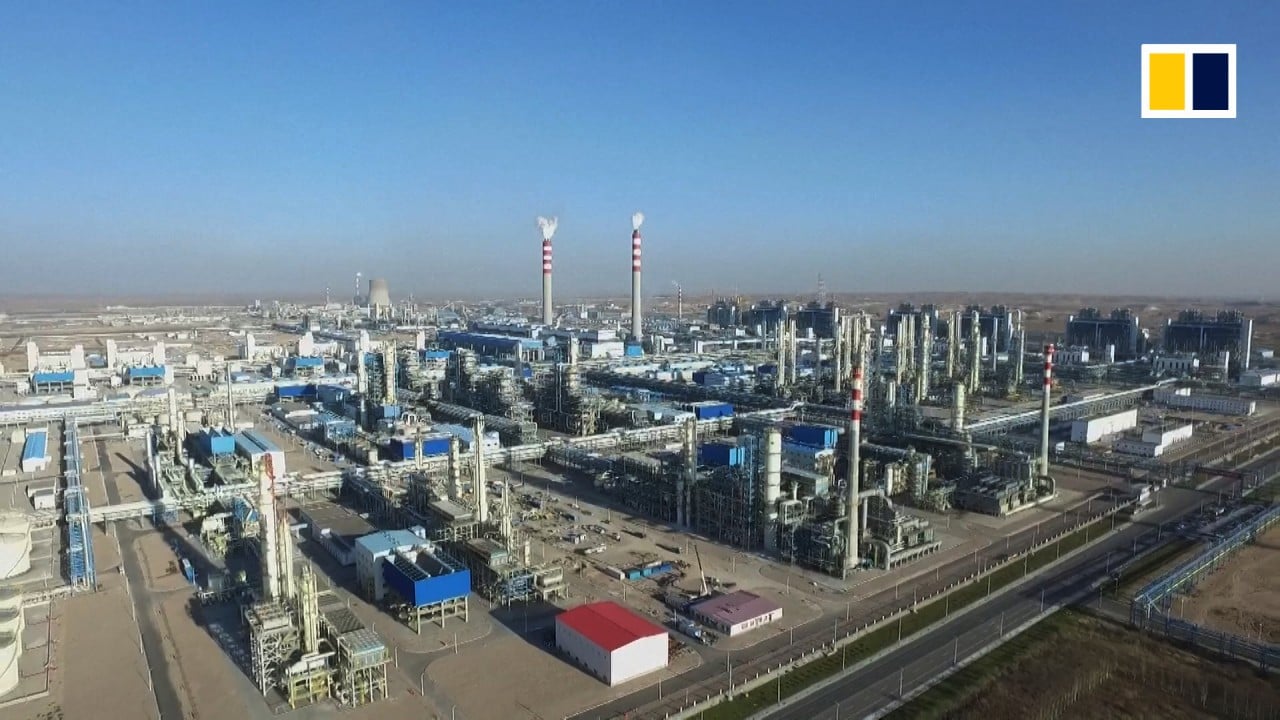
Chinese offshore oil giant CNOOC sets renewable energy goal to aid nation’s decarbonisation efforts
- The Chinese oil and gas major is pursuing onshore solar and wind farm projects with a goal to build at least 5,000MW by 2025, says chairman Wang Dongjin
- CNOOC reports 221 per cent jump in first-half net profit to 33.33 billion yuan on the back of higher oil prices
The Chinese offshore oil and gas giant was actively pursuing renewable energy projects with a goal to build up annual capacity of at least 5,000 megawatts by 2025, chairman Wang Dongjin said on Thursday.
“We have set up a team to study and formulate our plans to implement carbon reduction targets for 2030 and 2060,” Wang told reporters after CNOOC unveiled a 221 per cent year-on-year jump in first-half net profit to 33.33 billion yuan (US$5.1 billion). “We will announce them at a suitable time.”

The company’s first offshore wind power project 39km off the coast of Jiangsu province was connected to the grid last September. It has a total installed capacity of 300MW, enough to supply the annual needs of a quarter of a million mainland Chinese households, cutting emissions of 571,000 tonnes of carbon dioxide per year.
In the next five years, the company plans to spend 5 to 10 per cent of its total annual capital expenditure on low-carbon projects, Wang said. The overall budget for all its projects is 90 billion yuan to 100 billion yuan this year.
It is also targeting to raise the contribution of natural gas to total oil and gas production from 20 per cent currently to 35 per cent by 2025. Burning of natural gas results in roughly half the carbon emissions of coal per million British thermal units of energy and 30 per cent less than oil.

01:05
China's largest offshore wind farm ready to start operations
CNOOC said its first-half net profit grew mainly due to a 61 per cent jump in average oil selling price to US$62.38 a barrel. A 5 per cent increase in the selling price of gas and a 7.9 per cent rise in total oil and gas output to 278.1 million barrels of oil equivalent also helped.
These were partly offset by a 12.7 per cent increase in the production cost per barrel to US$28.98 because of rising commodity prices and the yuan’s appreciation against the US dollar.
Climate change: China’s emissions-trading market needs fine-tuning
Meanwhile, chief financial officer Xie Weizhi called on the US government to reverse its “unreasonable” decision to sanction the company, saying CNOOC has always abided by disclosure rules since going public in 2001.
Most of the shares held by its former US shareholders were now owned by mainland Chinese and other Asian investors, Xie said.

02:52
How does China generate its energy?
Sanford C. Bernstein senior analyst Neil Beveridge said CNOOC was one of the least expensive oil and gas stocks among global peers.
“Addition to the US [sanctions] list is part of the reason for the discount, but for non-US investors who want exposure to oil, CNOOC offers attractive returns,” he wrote in a note on Thursday.
He has a target price of HK$13.1 on the stock, which closed 1.8 per cent lower on Thursday at HK$8.11.
CNOOC declared an interim dividend of 30 HK cents per share versus 20 HK cents in the same period last year.

